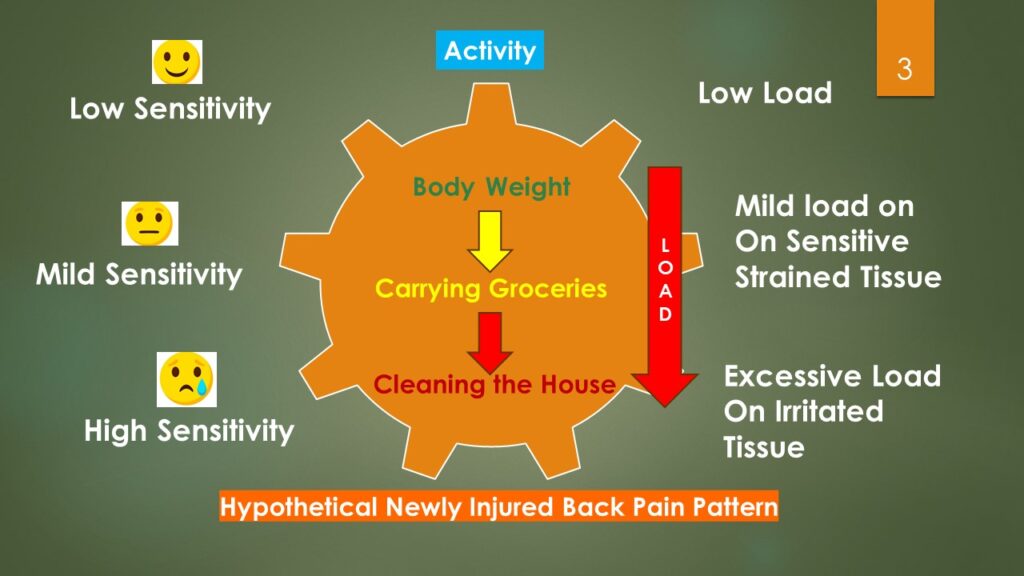After injury , a significant part of the rehab process at the beginning, is to avoid aggravating your hypersensitized and painful tissue to allow for recovery. To do this you need to know your Motion, Activities and Load Sensitivities.
An example of motion is bending over, an example of activities would be cleaning the kitchen and a load example would be carrying a laptop bag.
Not being aware of your MALS could keep your system hypersensitized and prevent the aggravated tissue from healing. An example of being unaware is , “I don’t why I hurt so much today – after you spent the previous day mowing the yard and raking pine needles”
Here is a graphic I created that somewhat explains load tolerance and sensitivity. On the left you see sensitivity levels, the gear in the middle is activity and low load amount on the right.
[graphic]

If you look at gear in the middle with body weight, it is low load and thus low sensitivity, but as the activity load increases on the newly injured back, the nervous system responds with higher pain. In this graphic, cleaning the house has exceeded the load capacity of newly sensitized and irritated tissue, thus resulting in higher pain.
Later we’ll go over the Motion Activity and Load inventory where you will record your personal motion, activity and load sensitivities. You’ll need this to document your progress.
There is a PDF guide in Better Back Exercise Programs